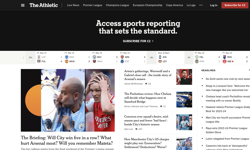In the WAN research, ten drivers of circulation success were identified:
1. Take the long view
Circulation winners think and act long term. They regard circulation growth as the factor that drives every other aspect of success. They do not seek short-term results. This philosophy is manifested in a number of ways: consistent strategy, low management turnover, investment to build the business rather than to win short term profit.
2. Clear definition
Circulation winners know their audience. Each newspaper appealed to a clearly defined audience and the definition was clearly enunciated and obviously well understood across the newspaper organisation. They did not try to be all things to all people. Circulation winners see their role as serving their audience. All the content and promotions are carefully geared to their interests and aspirations.
3. Being the best
Circulation winners have to be the best. They employ the best people and pay them well. They invest in better technology to produce better quality products and they outmarket their competitors in scale and originality. They benchmark themselves against their competitors and are simply not prepared to let a competitor be better at any critical factor.
4. Circulation today, profit tomorrow
Many of the newspapers in this study generate profits considerably above the industry norm. But their belief is that growing circulation delivers the profit. In the cases of newspapers that pursue annual profit targets as an over-riding objective, there is evidence to show that the profitability margin is inversely proportionate to circulation growth. Most of the executives interviewed said that they would sacrifice short-term profits to secure circulation stability. Across the industry, newspapers typically spend 2.5% of turnover on marketing – a very low figure compared to other industries. We are a mature market but are under-investing in marketing by around 50%.
5. Integration
Circulation winners love working together. They work in teams and share the common goal of building circulation. Most pointed to the inability of managers at their competitors to work together as a key weakness. The need for an integrated approach manifested itself in a number of areas: cooperation between editorial and commercial departments, the need for journalists to nurture and effectively present reader promotions and the relationship between the print and online operations of a newspaper.
6. Readers are customers
Circulation winners give their customers what they want. Their journalists don’t "write for themselves"; they write what their readers want to read and see themselves as service providers. All the newspapers surveyed had mechanisms for ensuring they continually kept up to date with changing readers’ needs and interests – in most cases they relied heavily on regular market research programmes.
7. Young blood
Circulation winners have a policy of hiring young journalists. They train them hard, give them early responsibility and the room to come up with new ideas. They believe that a steady flow of young journalists rejuvenates the content. They challenge the older staff. They look at things differently and they don’t take things for granted. Several of the newspapers had programmes for "fast-tracking" young journalists – and other young staff – through the business, encouraging young managers.
8. Older readers
Circulation winners mature with their readers. While they recognise the need to encourage younger people to read the newspaper, they also recognise that readers need to be attracted across the age groups. The notion of young reader programmes was rarely raised. Many of the newspapers recognised that the population – in mature newspaper markets – was ageing and targeted their newspapers at the ageing audience.
9. Women readers
14 out of the 18 newspapers surveyed had a predominantly female bias. In a medium that has a predominantly male audience, several of these newspapers appealed more to women than men. Editors and publishers must ask themselves if the balance of their content is correct, and if its presentation is geared towards both men and women. They should ask if their integrated promotions strategy appeals equally to men and women.
10. Moment of truth
Circulation winners had a moment of truth. For many of them, a do-or-die decision forced them to change course, to think differently and radically, and it was on the basis of the decisions made at that time that the newspaper has flourished ever since. Several of the newspapers surveyed had been in dire financial positions and had been forced to make decisions to change course. A good example, close to home is the Daily Mail. On the verge of bankruptcy in the early 70s, it repositioned itself as Fleet Street’s first middle-market tabloid, appealing mainly to women. The formula for its success was set then. For some newspapers with declining circulations, it is perhaps better to face that moment of truth now than in five, ten or twenty years’ time.
| The report Circulation Winners is published by "Shaping the Future of the Newspaper" – a WAN project. For more information, and to order a copy, please visit: www.futureofthenewspaper.com Alternatively email Jim Chisholm. |










